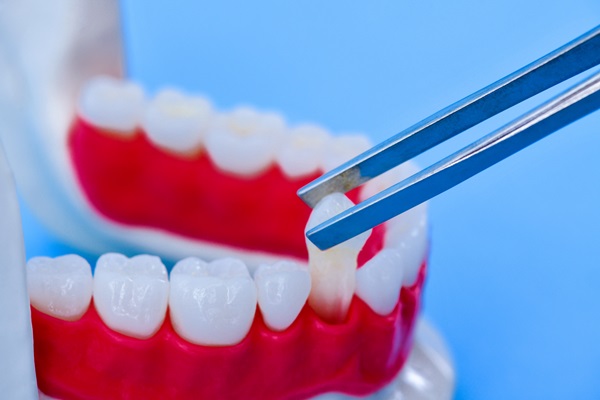How Long Should Pain Last After a Socket Preservation Graft

The dental procedure of a socket preservation graft may be new to you. If your dentist tells you that you may need one, it is nice to know what to expect from the procedure. Your dentist can prepare you for the procedure and give you tips on how to recover. Though you can expect some discomfort after the treatment, you can have a full bill of health if you follow your dentist’s recommendation.
An overview of a socket preservation graft
Permanent teeth are meant to be just that: permanent. This does not mean all people keep these teeth forever. Accidents, injuries and poor dental habits can cause a tooth to fall out. Sometimes, the dentist will extract the tooth to prevent an infection or decay from getting more severe.
An extracted tooth leaves behind a hole where the tooth had been. The socket can become vulnerable to problems such as a dry socket. This condition can expose the nerves. Keeping the socket intact will also protect the alveolar ridge. This bone surrounds the roots of all teeth. The socket preservation graft places a bone where the tooth used to be, protecting the ridge and structure of the mouth.
What the dentist does in this procedure
A dentist or oral surgeon will do this surgery. Before moving forward with the socket preservation graft, the dentist will speak with the patient about each step of the process. Sometimes, the graft will immediately follow an extraction, though some dentists and surgeons prefer to wait a week or two. The patient receives a local anesthetic for comfort and the dentist replaces the deteriorated bone with a new one. The bone can be from another part of the patient’s body or from a donor, including an animal. Synthetic bones are also an option.
After the surgery
A socket preservation graft can be a challenging surgery for a patient. The person can expect some pain and discomfort for the first few days. For relief, the dentist or surgeon may prescribe medication. Over-the-counter drugs may also help reduce swelling and irritation.
Length of recovery
Most patients start to feel free of pain at the surgery site about five to seven days after the procedure. Patients who do not recover during this time frame should contact the dentist or surgeon. The patient will likely have a follow-up appointment a week or two after the surgery.
Helping the recovery along
Patients should not rinse or spit for three days after the socket preservation graft. During this time, the person should not touch or disturb the area in any way. It is wise to avoid eating anything hard or sucking from a straw for three to five days.
Get well soon
The immediate aftermath of a socket preservation graft can be difficult. You will experience some irritation and pain, but it should subside if you take care of yourself. This procedure is important to your oral health. If you recently lost a tooth or need a dentist to extract one, contact a dentist near you and discuss this procedure.
Request an appointment here: https://spectrumsurgical.net or call Facial Spectrum at (816) 524-4334 for an appointment in our Lee's Summit office.
Check out what others are saying about our services on Yelp: Read our Yelp reviews.
Recent Posts
A dental implant is considered the gold standard of dental restorations. Titanium rods act as dental roots that stimulate the jawbone. The artificial crowns replace the missing ones above the gumline. These restorations are what you need to have stable, natural-looking teeth again. Here are the details about the role of a dental implant in…
A dental implant is considered the gold standard of dental restorations. Titanium rods act as dental roots that stimulate the jawbone. The artificial crowns replace the missing ones above the gumline. These restorations are what you need to have stable, natural-looking teeth again. Here are the details about the role of a dental implant in…
A regular dentist can refer you to an oral surgeon if you need more dental care. This type of surgeon can perform procedures that can improve the face, mouth, or neck. Understanding the reasons for a referral to this provider can help you prepare for your procedure. Here are the reasons your dentist will refer…
A sinus lift or sinus augmentation can build up your upper jaw. This procedure is invasive. The dentist will take healthy bone and place it in the section of the maxilla that needs it. Here are the sinus lift benefits that you must consider.Studies show that a thinning upper jawbone can result in the weakening…

